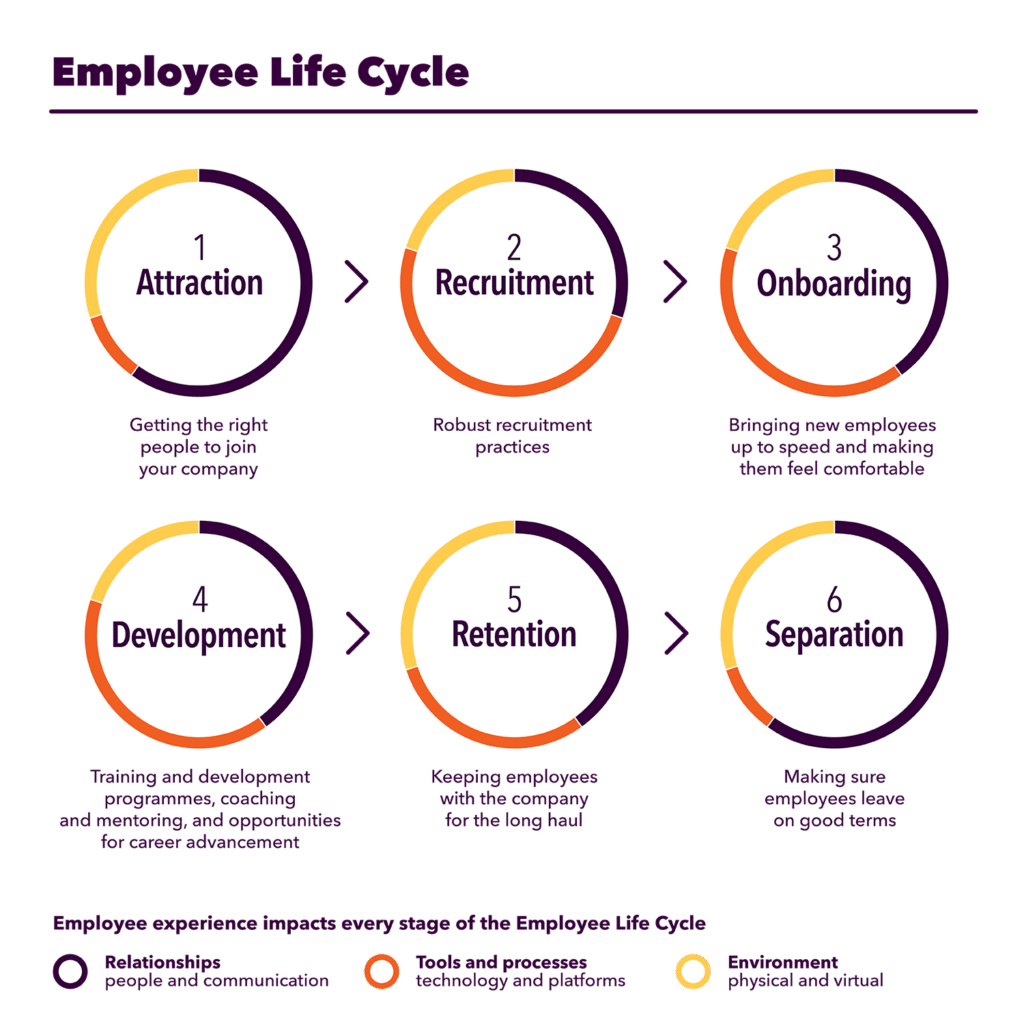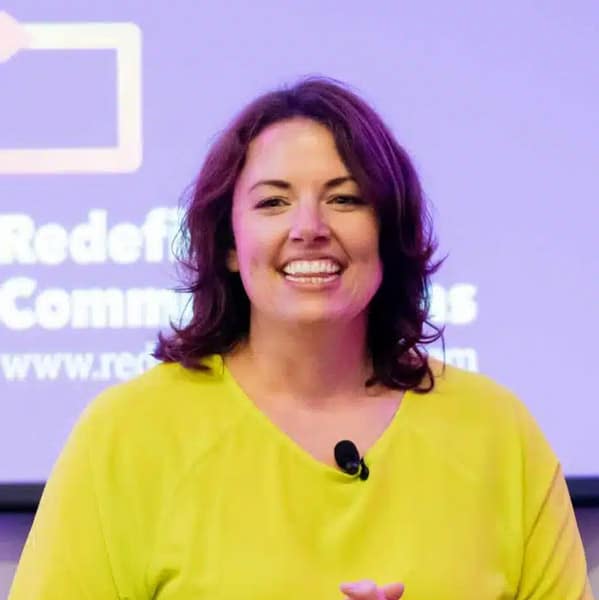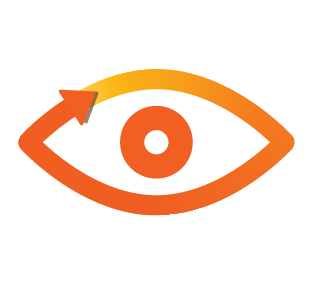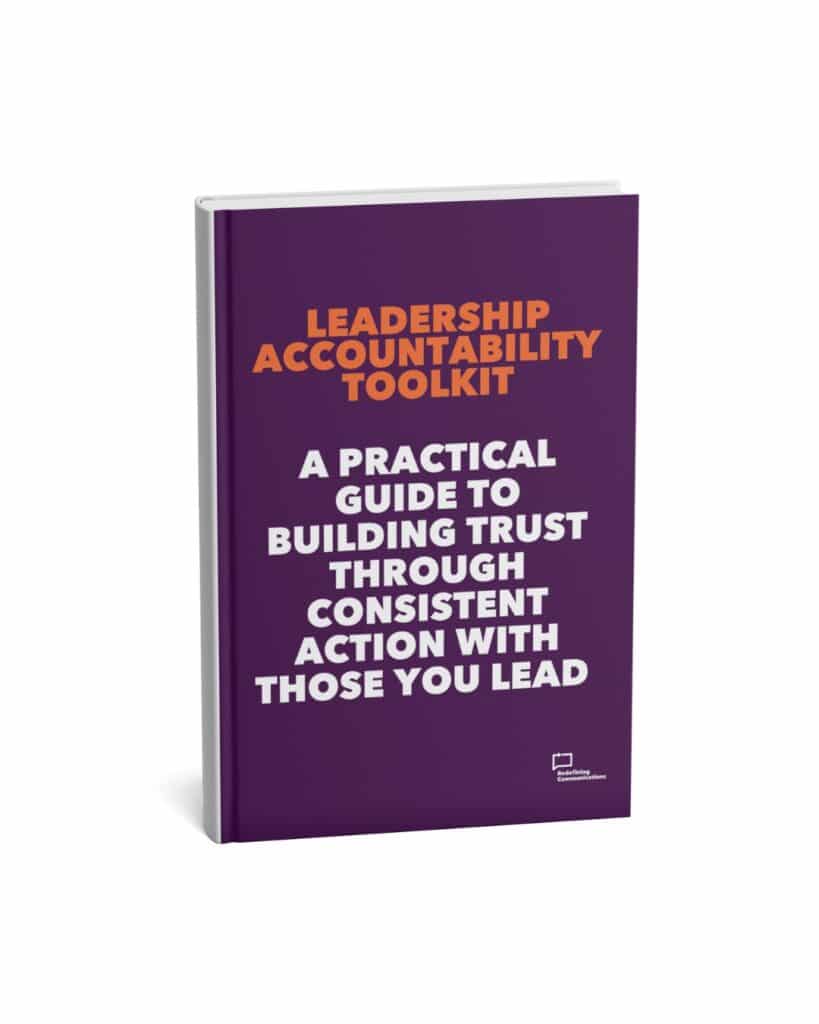You can’t create a high-performing organisation without creating a better experience for your employees. Yet, so often, this is something that’s only focused on at the start of someone’s journey.
We know the importance of a good experience when it comes to recruitment and onboarding but if this doesn’t continue into their employment staff can easily become distrustful and disengaged.
Which is why we’ve developed our own employee experience model.
By aligning employee experience with the employee lifecycle and looking at what areas should be the focus at each stage, we can ensure staff are having the best possible experience wherever they are on their journey with your organisation.
Employee experience and internal communication
Employee experience is, of course, about much more than communication but it is undoubtedly something that needs to be on every internal communications team’s radar.
My research into the key trends for communicators in 2024 found that the lines between the two are blurring, and it’s likely to be something that we’re playing a growing role in.
Our model provides a framework, helping to focus resources in the right place at the right time, and ensure we are keeping employees genuinely interested and engaged.
The three areas of employee experience
Our model, developed in 2023 as a result of my research in this area, is based around what we believe are the three core areas of employee experience:
Relationships: Relationships includes communication and culture. These are the parts of work that are based around human connection and focus on line manager relationships, internal communication channels, strategies and leadership.
Tool and processes: Tools and processes are the things we use every day to get work done. These are particularly important to Gen Z but they have also been a source of frustration for employees for years. They might be tailored tools to the business or generic IT solutions.
This area also includes the internal processes and perceived bureaucracy within the organisation.
Environment: Environment is both physical and virtual. This is about where we work and to some degree, how we work. What is our environment like if we work at home, if we work in a store in a shopping centre, a hospital, or are fully nomadic and work from anywhere?
These three elements make up the employee experience, but for them to come to life we must map them to the employee lifecycle.
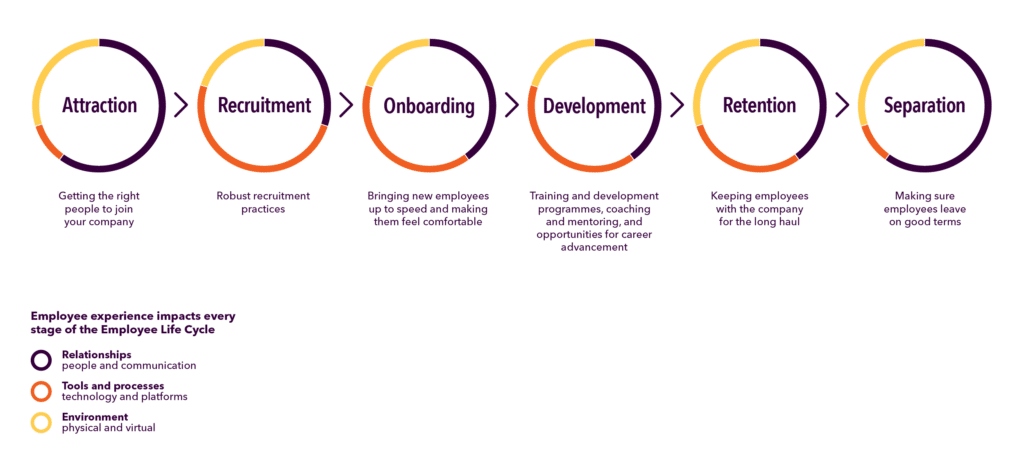
What is the employee lifecycle?
The employee lifecycle typically consists of six stages:
- Attraction
- Recruitment
- Onboarding
- Development
- Retention
- Separation
You can read more about each stage here.
How do I use the model?
In our model each of the three core elements of employee experience is represented by a different colour.
At each stage of the lifecycle, the amount of that colour in the circle changes depending on importance. This will be different for different people but, as a general guide, we wanted to be able to show how the employee experience evolves through the lifecycle and how different areas need a different level of focus at different times.
Take a look at the way your organisation is currently structured and see how much time is spent on each of the three areas at each of the six stages. Does it align with the diagram?
Why is this important?
Employees thrive in organisations where they feel safe and looked after, where they know what to expect and when they’re not fearful of what could happen next.
A great employee experience drives motivation, enjoyment and engagement at work. We must provide touchpoints for people throughout their working day, week or month, that help them feel comfortable and happy in their decision to work within our organisations, this is the difference between a great employee experience and a mediocre one. I’ve written more about the science behind this here.
What next?
We use this model to help organisations identify where their employee experience is out of alignment with the employee lifecycle, enabling them to move from a place of chaos to one of calm.
You can find out more about this on our Employee Experience page or contact us here.

